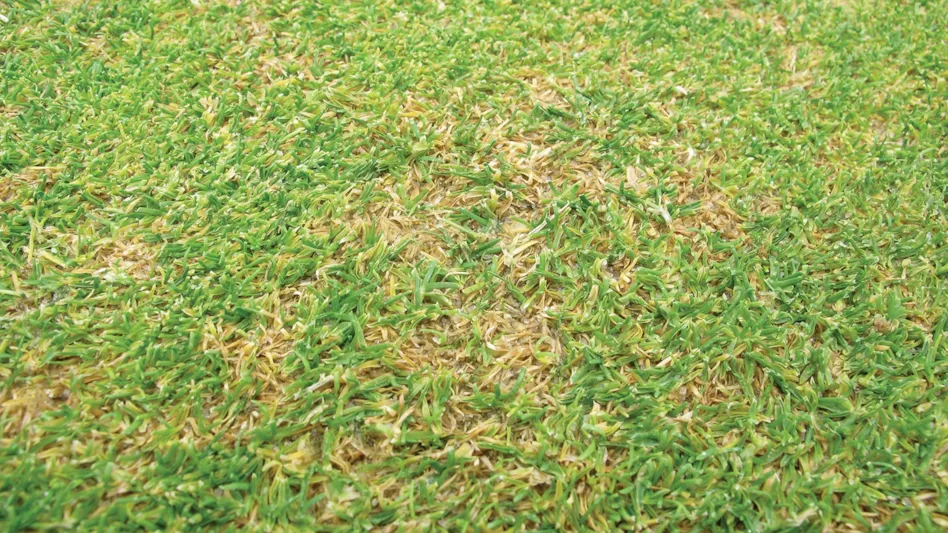
 |
Heat and humidity are major factors in determining the severity of an anthracnose outbreak on turf. If this summer warms up as much as previous ones have in recent years, the potential for the disease will only increase, says Dr. James A. Murphy, specialist in turf management at Rutgers University’s Department of Plant Biology & Pathology.
“I haven’t heard any real clear forecasts on what the summer temperatures are going to look like,” he says. “So far, temperatures haven’t been unusually high leading into this part of the spring. We have had some warm weather, but we also have had some fairly cool weather.”
As far as anthracnose pressure in recent years, 2015 was “moderately severe,” 2014 was “moderate” and 2013 was “moderately severe,” Murphy says.
Rainfall is another factor when determining the potential for the disease, he says. “Historically when you had really wet springs, there tends to be the potential for more anthracnose because that seems to encourage infection of the plant when it’s really wet out,” he says.
Researchers at Rutgers’ New Jersey Agricultural Experiment Station in New Brunswick saw a relatively dry April, Murphy says. However, that doesn’t mean anthracnose won’t appear. Low-lying areas where water sits for long periods of time merely provide a guideline for where to look for the disease, he says.
“We almost always have the potential for anthracnose,” Murphy says. “The summers are usually warm enough to get some level of disease activity, so you need to be prepared to have a management program for it.”
 |
Because grasses at relatively low heights are more susceptible to disease than grasses at higher heights, providing low grasses with adequate nitrogen fertility will decrease that susceptibility, he says.
At the same time, fertilizing high levels of nitrogen on putting greens allows the grass to grow more during the day, which makes it more difficult to keep the balls rolling, Murphy says. “So a nice combination is to have either a weekly, or every two weeks, growth regulation program on the greens to keep them from growing too much under higher fertility,” he says.
In addition to taking proper steps with fertilizing and mowing, superintendents should incorporate topdressing into their best management practices, he says.
“If you haven’t, you need to soon get started with your topdressing programs, your fertility programs, because those can have a big impact on keeping the disease at bay,” he says. “In fact, it’s much, much easier to control the disease chemically if you’re doing these things. If you don’t do these things, your chemical inputs have to go way up to manage this disease versus if you don’t do the proper fertilization, proper topdressing, proper mowing management.”
Anthracnose does develop chemical resistances, so it is important that superintendents rotate chemicals and tank mixes, Murphy says.
“You’ve got to make sure that you recognize that you do have potential for resistance buildup if you use, like, the strobilurin chemistries over and over again,” he says. “You’ll get resistance, and we have that on our research farm where we can’t use that class of chemistry anymore for anthracnose. We can use it for other diseases, but it’s really not very effective at all on anthracnose anymore.”
Foliar blight and basal rot are two phases of the anthracnose disease, Murphy says. During foliar blight, the anthracnose chews on the leaves, which is problematic, but the worse phase is basal rot, when the fungus gets into the crown of the plant, he says.
“That’s when you have the severe losses of turf because you’re killing the crown, not just damaging the leaves,” he says. “That crown is a major growing point that you’ve got to keep alive. If you lose that, you lose everything.”
About the author
Patrick Williams is a GCI contributing editor. You can reach him at pwilliams@gie.net.





